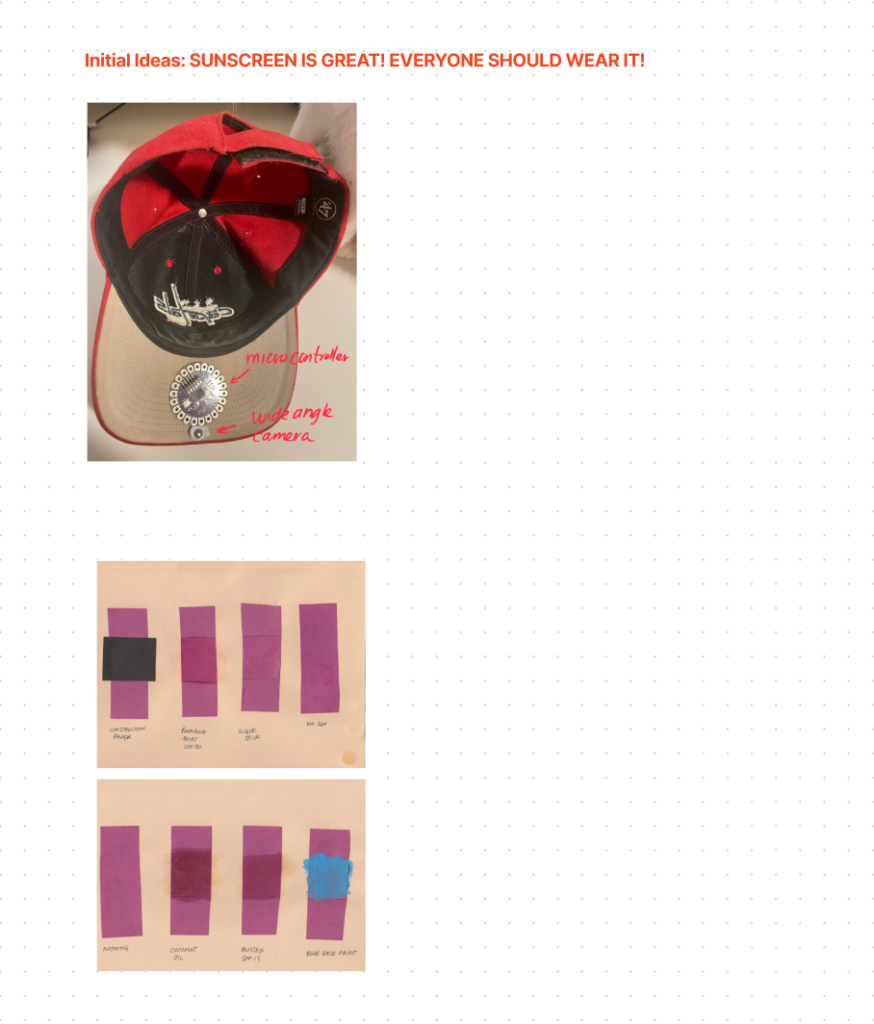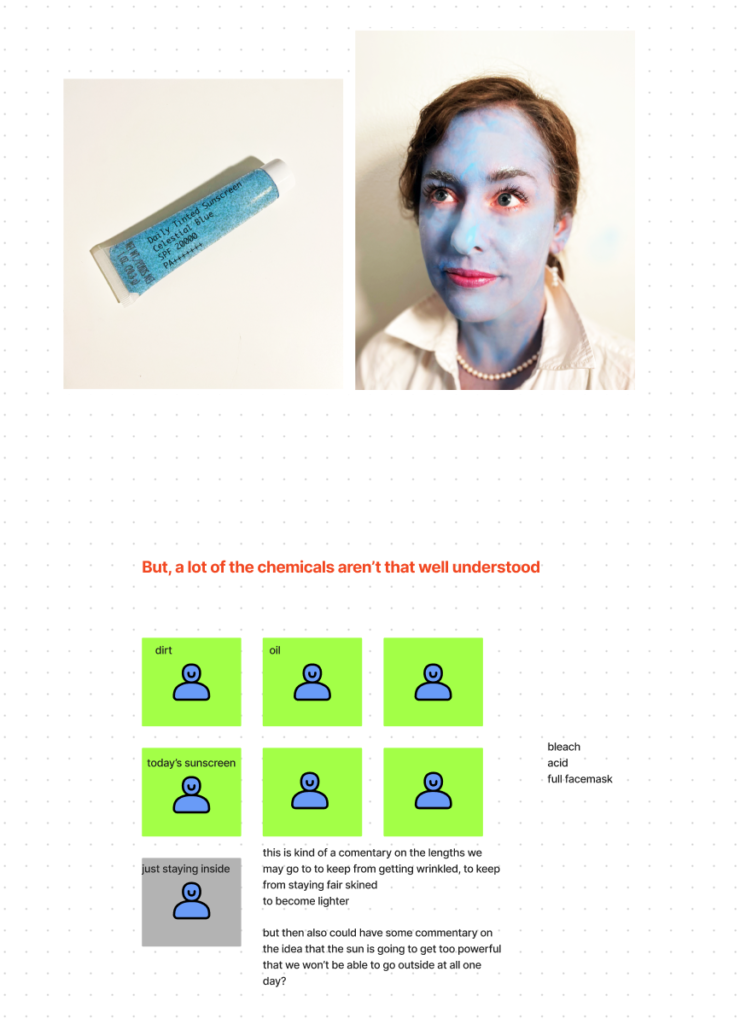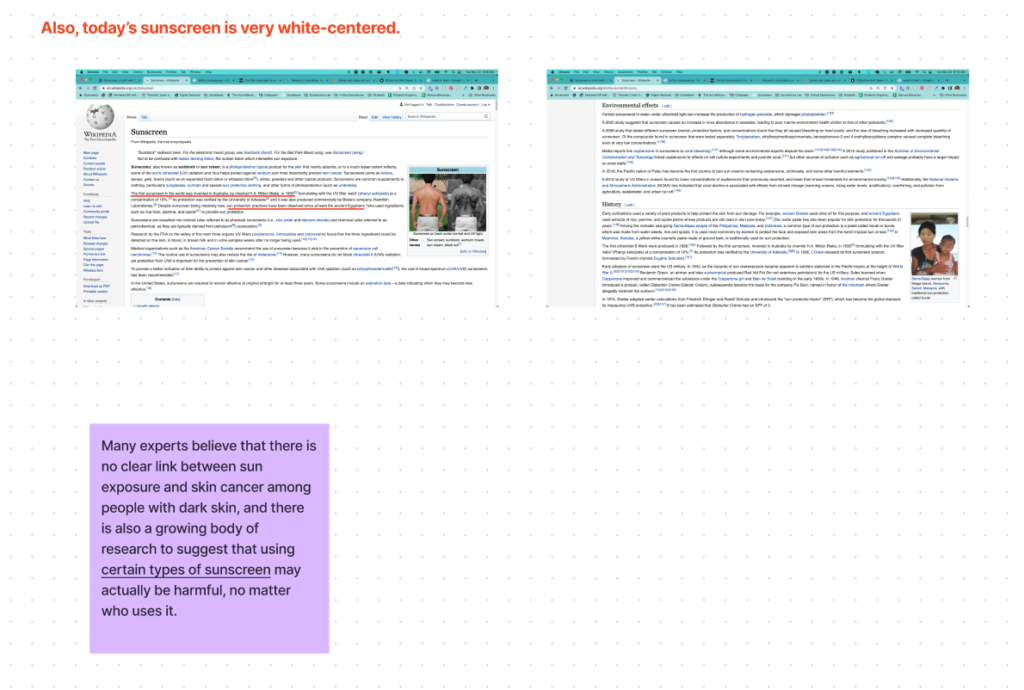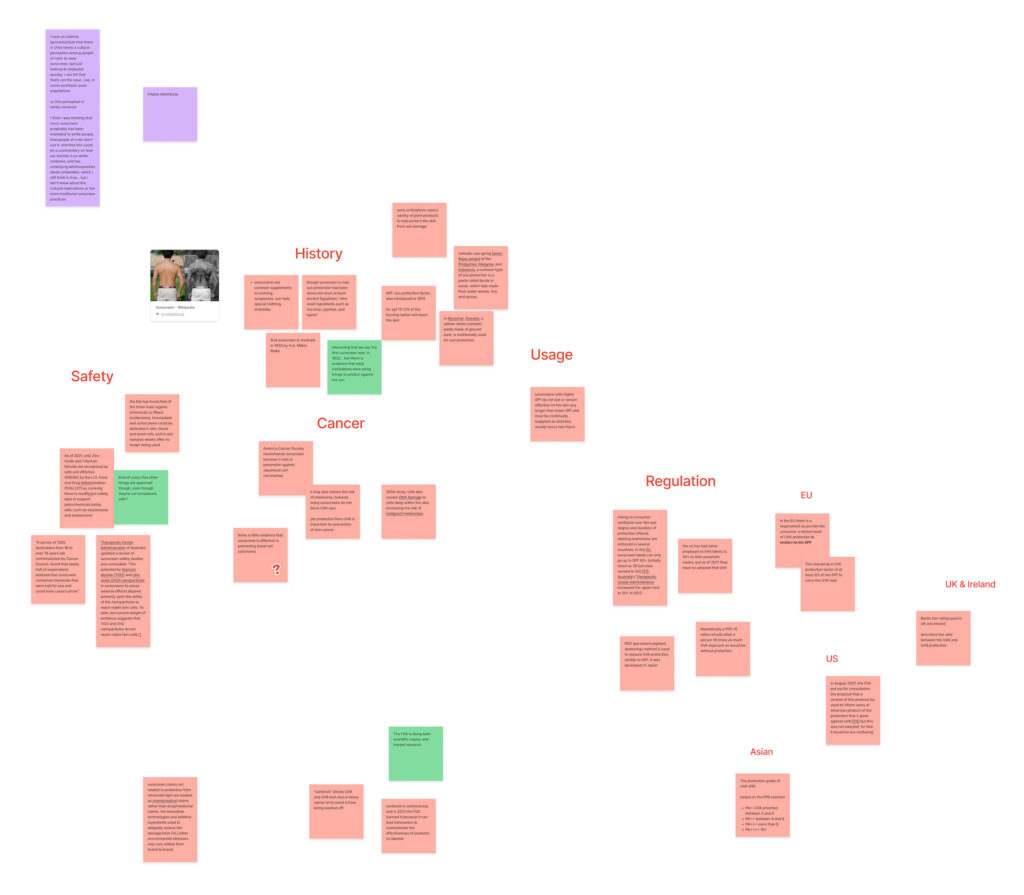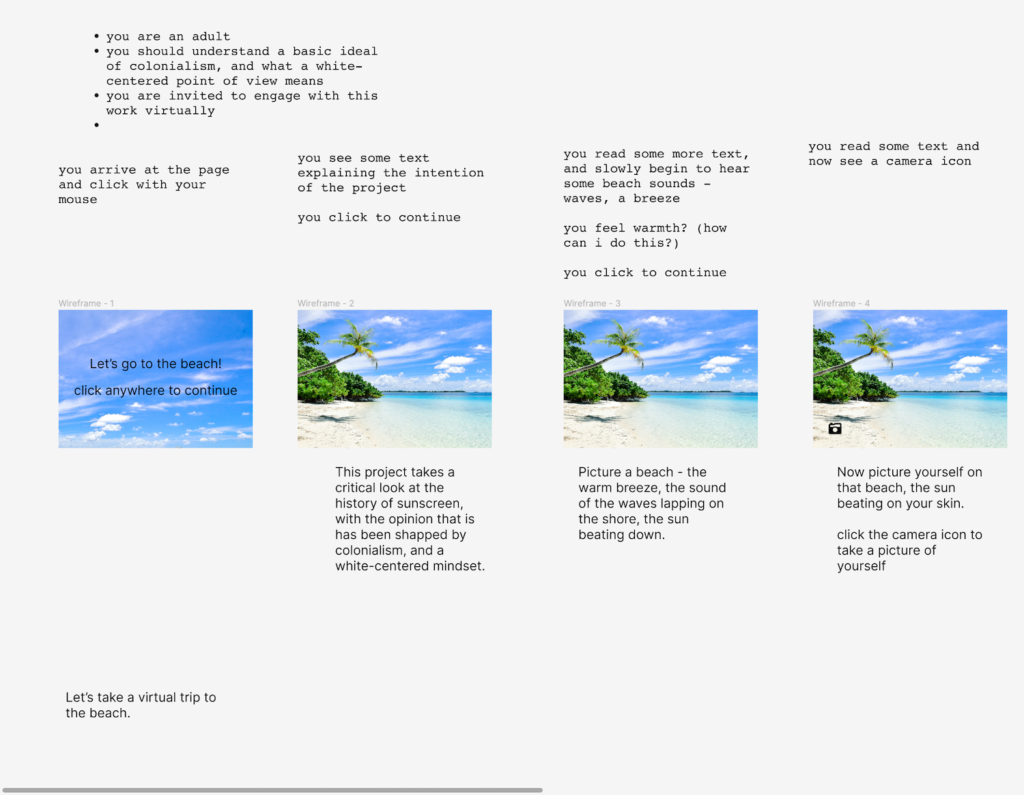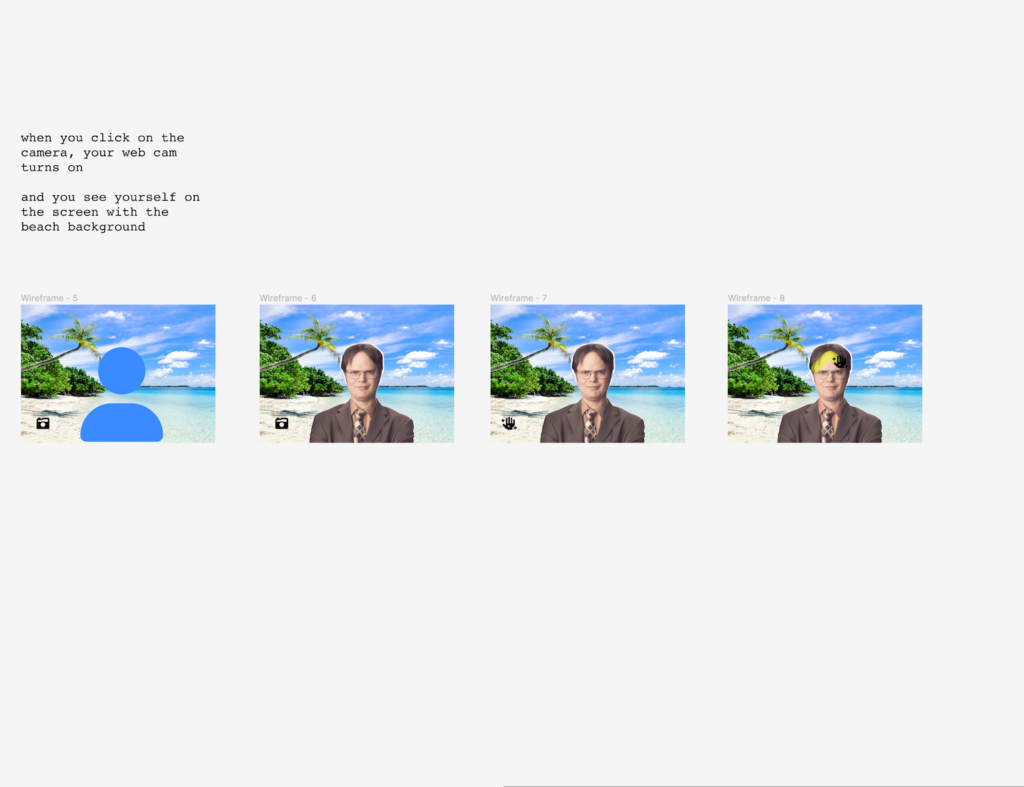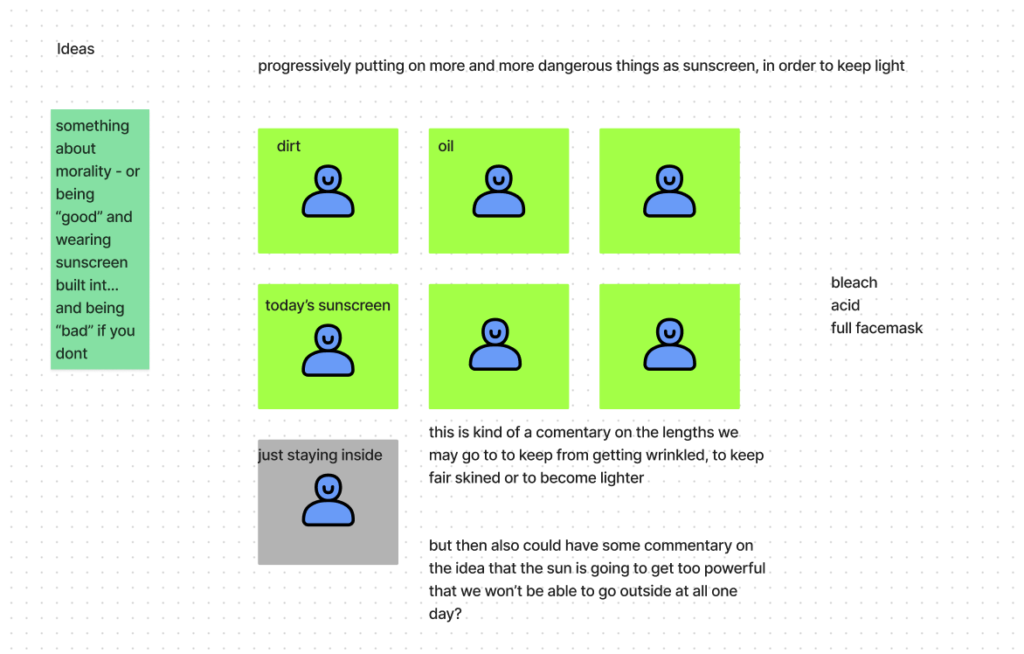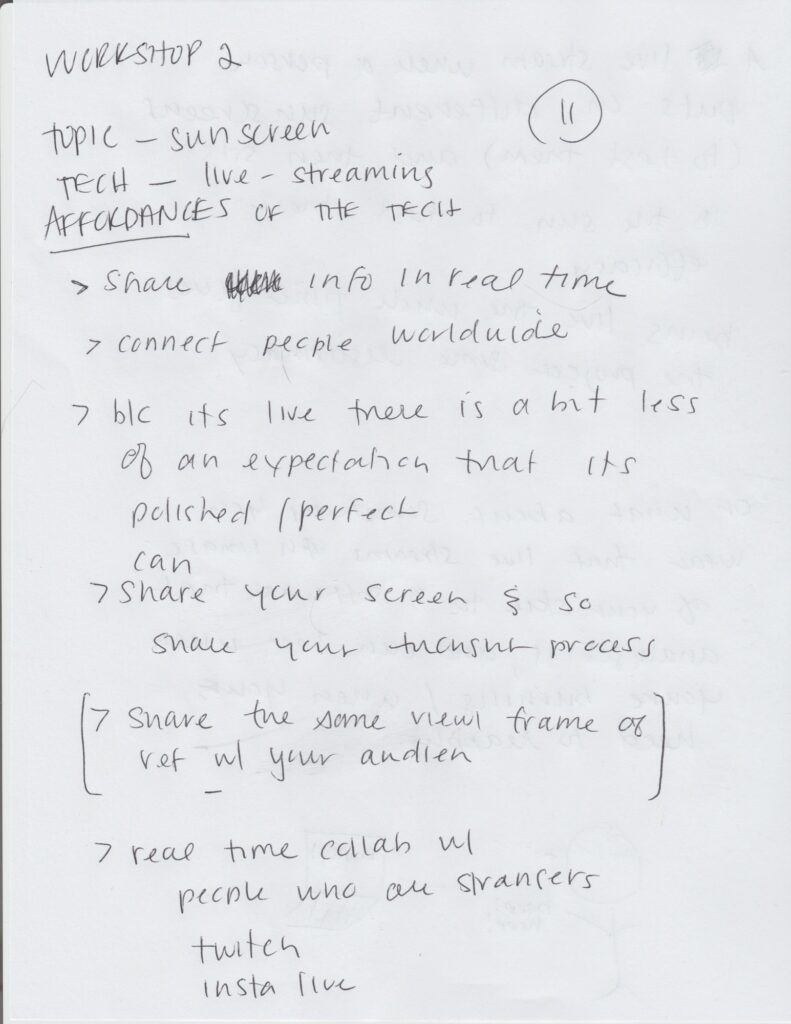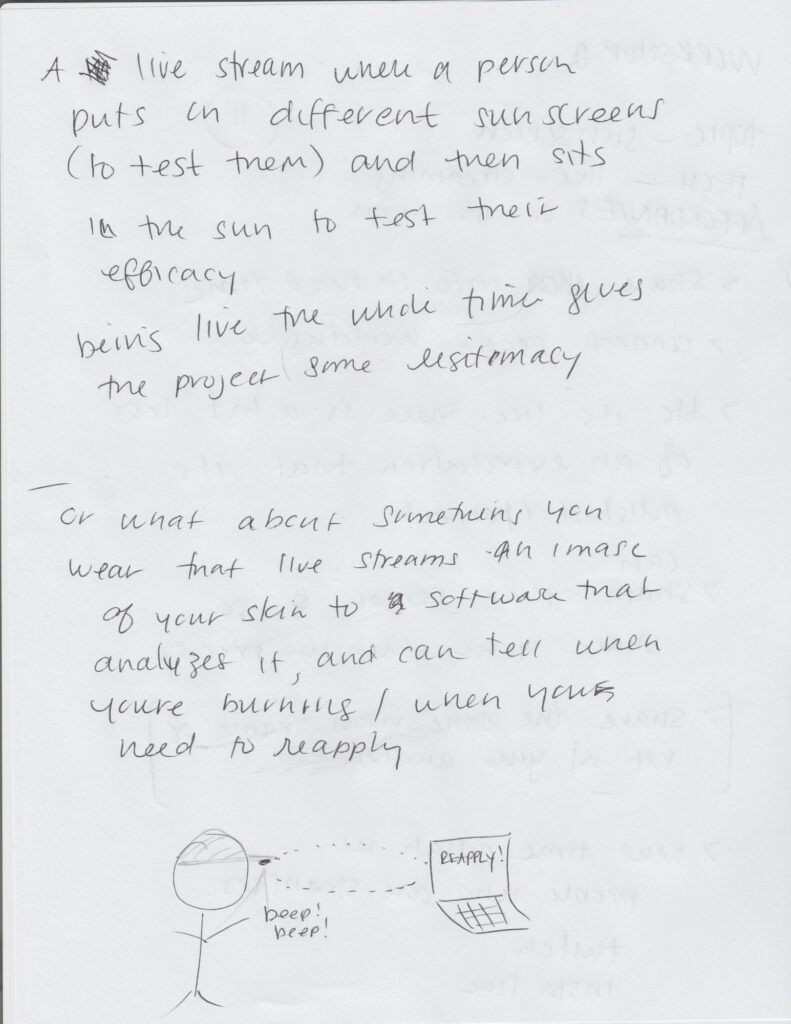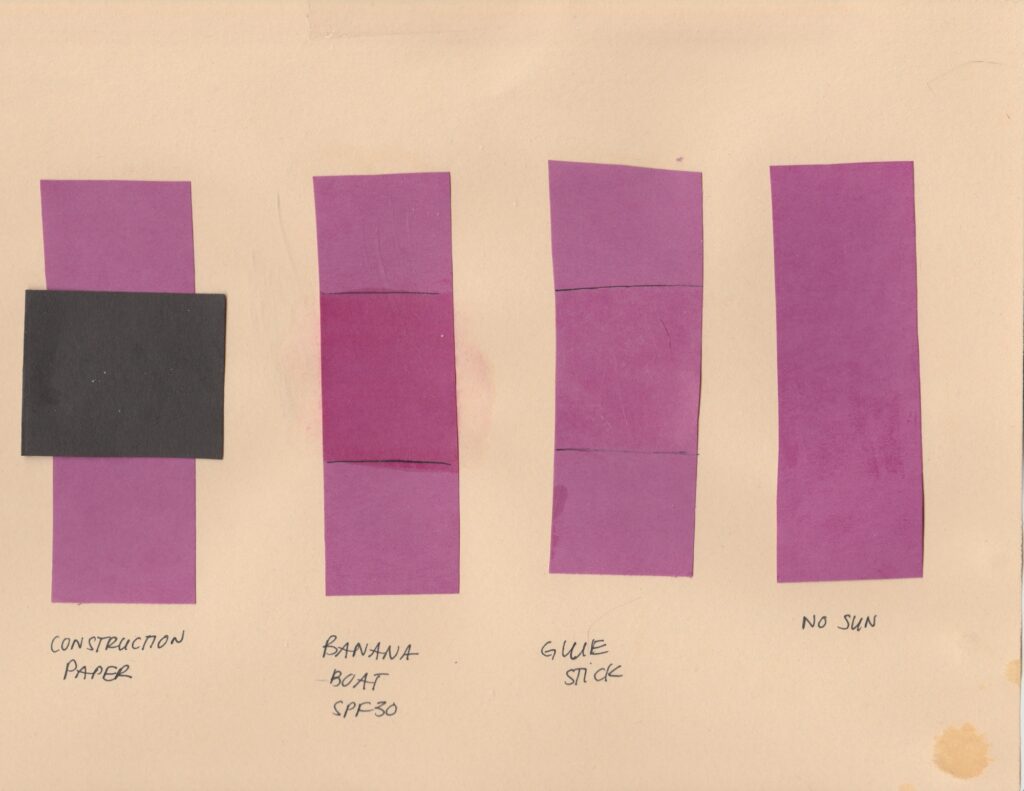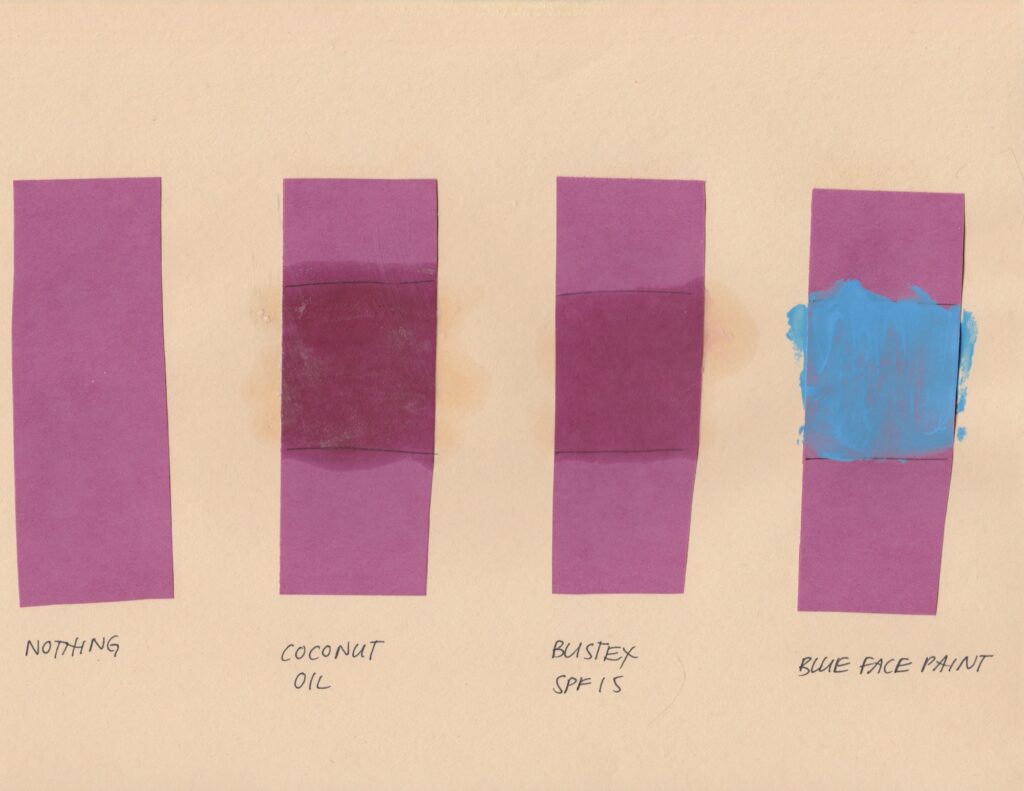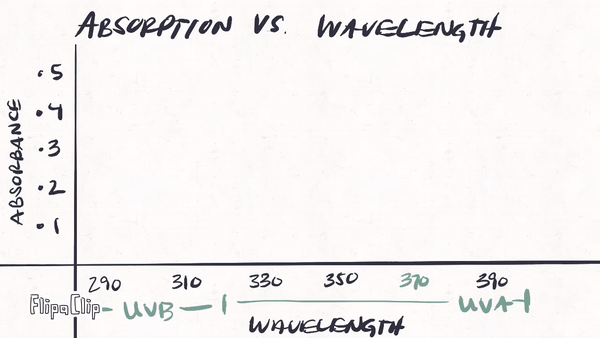Research and Perception
I began the my research into sunscreen with the anticipation that it would help clear up some of my uncertainties about how sunscreen works, and that I would continue to be very pro-sunscreen. I even hoped that I could create a compelling argument to convince the people in my life who don’t wear sunscreen to reconsider. I was surprised to find out that sunscreen isn’t so cut-and-dry as a topic. The systems that sunscreen effect are far more varied than I had realized. They include:
- The physics of how UV rays break down and damage cells, from human skin to the sunscreen blockers themselves.
- The efficacy of the chemical blockers that are used in sunscreens and their potential negative health and environmental impacts.
- The efficacy of the physical blockers that are used in sunscreens, and the fact that they are potentially uncomfortable and leave a white-cast on the wearer’s skin. This white-cast has different implications depending on skin color.
- How different governments and/or regulating bodies handle research, ratings, marketing, etc.
- How people of varying skin tones are included or excluded in sunscreen research. And what products are created and widely available for people of color.
- Why people wear sunscreen in different cultures, and how those reasons could be tied to colonialism, which is a varied and complex system itself.
My investigation helped me to realize how much I had centered myself and my experiences when I first started to explore this topic. It was enlightening to realize how something as seemingly simple as sunscreen could be viewed at with such bias. As a white person who has had issues with skin damage, sun screen has always felt like a must. I considered the potential health risks due to the chemicals in the sunscreen as secondary and less dangerous than the high risk (for me) of getting skin cancer. And with that mindset, I went into the investigation with a lens of morality – seeing as those that wear sunscreen as “better” or “more responsible” to some extent.
After interviewing my boyfriend, who doesn’t need to wear sunscreen like I do, I started to see how my point of view was very self-centered. I am trying to come at this realization without much self-judgement, because it makes sense to understand the world through the lens of our own experiences. But I think it’s also essential to do work to understand experiences of others as well. A couple of questions that came that made me rethink my previous point of view were:
- For people who don’t have a high risk for skin cancer – is it worth the risk of using chemical sunscreen, when we don’t fully know how some of the chemicals effect humans?
- Is there any element of classism related to sunscreen use?
This is when I came to the realization that colonialism is really at the heart of a lot of what I know about sunscreen:
- Historically: Like I mentioned in my presentation, wikipedia says that an Australian chemist, H.A. Milton Blake, invented sunscreen in 1932, yet contradictorily the article then later goes on to describe how sun protection has been used by civilizations for thousands of year.
- Clinical research: People of color are missing from a lot of sunscreen efficacy research. In addition, there are also scientists that are questioning how dangerous UV rays are to people who have more melanin in their skin – since there is little to no research about this topic, it’s hard to understand how dermatologists can recommend people of color to put potentially harmful chemicals on their skin so readily without more information.
- Product development: Sunscreens on the market specifically developed for people of color are relatively new.
- Product usage: I found several accounts of people who’s primary use of sunscreen is to keep their skin from getting darker, rather than being specifically worried about skin damage. The main motivation for sunscreen use was to keep skin lighter, presumably a product of white-focused beauty standards.
Form and Process
In terms of the forms that I considered, I had initially wanted to do some sort of performance of myself putting on increasingly absurd amounts of sunscreen. But as I started to aim my investigation more toward colonialism, it felt inappropriate to focus on my own skin in this instance. I opted to go for a virtual reality sort of experience instead, because not only did that feel a bit more appropriate but it was also more interactive. I chose to represent the different sunscreens as purple and green, to kind of get the user out of their normal skin color, and see how the experience felt. To further add to the experience, to bring the user to the beach, I added a beach video as the background, background audio, and subtly changed the brightness of the page to elicit different feelings, or to make the user feel like the sun was becoming brighter.
During my process, I really enjoyed the combination of making, researching and exploring during the daily practice. Since I again chose a topic that felt like it had some science to understand before I moved forward (though I’m not sure if that was necessarily true), I did feel myself getting stuck on completely understanding the research before beginning to brainstorm a critical lens. Creation helped with this, and allowed for me to get out of my analytical brain some, so that I could more creatively look at my topic. This daily practice is a tool that I would like to try again for future projects.
Another note about the process that I feel is worth noting is that during this project, I often worked in figma while documenting my research. I felt it gave me a central place to store my resource links, while also being able to pull out quotes and personal thoughts/ideas, and then physically group things together by theme. Once I came to this technique, I realized that it really works for my brain, and was a great way to organize the chaos!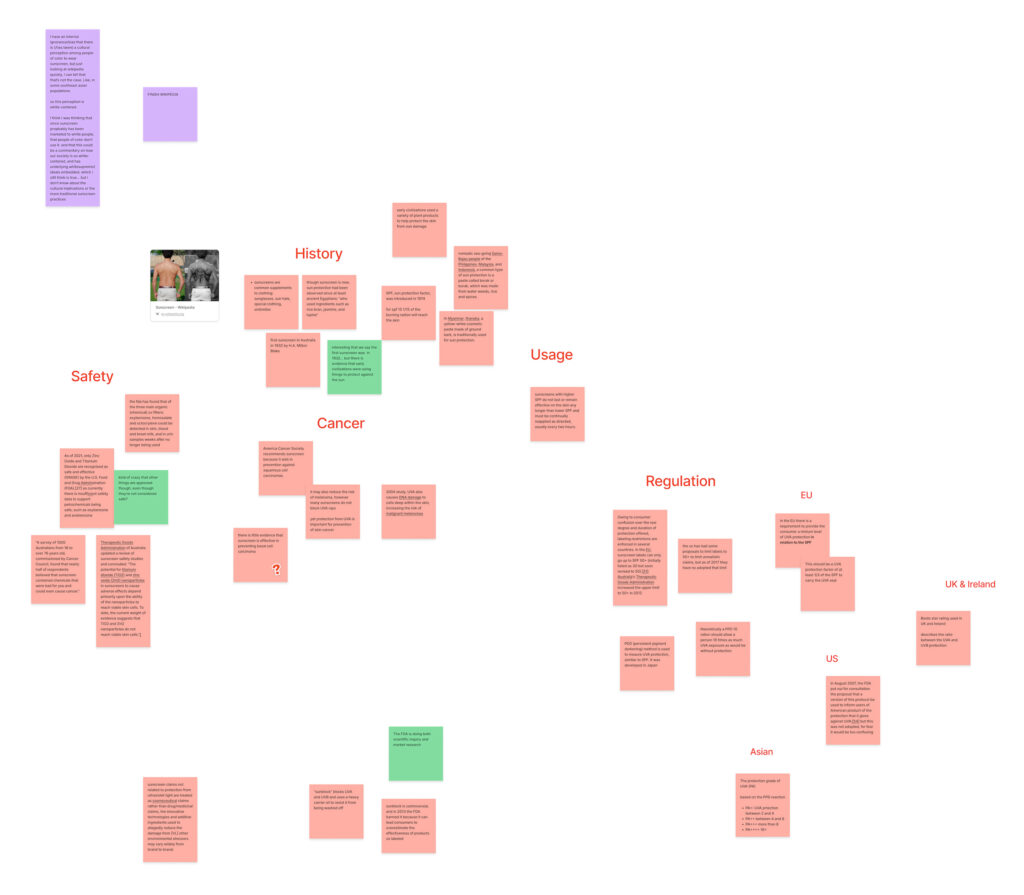
Future Plans
In the future, I think that I’d like to try this technique of capturing the organized chaos in my brain again. But perhaps it would be helpful to limit the resources that I consult at first, so that I’m able to start creating even if it’s with limited knowledge. I again found that research was easier for me to fall into, and experimentation felt a bit more uncomfortable.
I really want my projects to be well researched, and to consider different points of views. However, I’m realizing now, that by having a wide view of a topic, it has felt more difficult to find a critical point of view since I begin to feel more empathy and understanding to differing view points. I think that this could be incredible useful and powerful, but is also a bit of a challenge to overcome as well.

